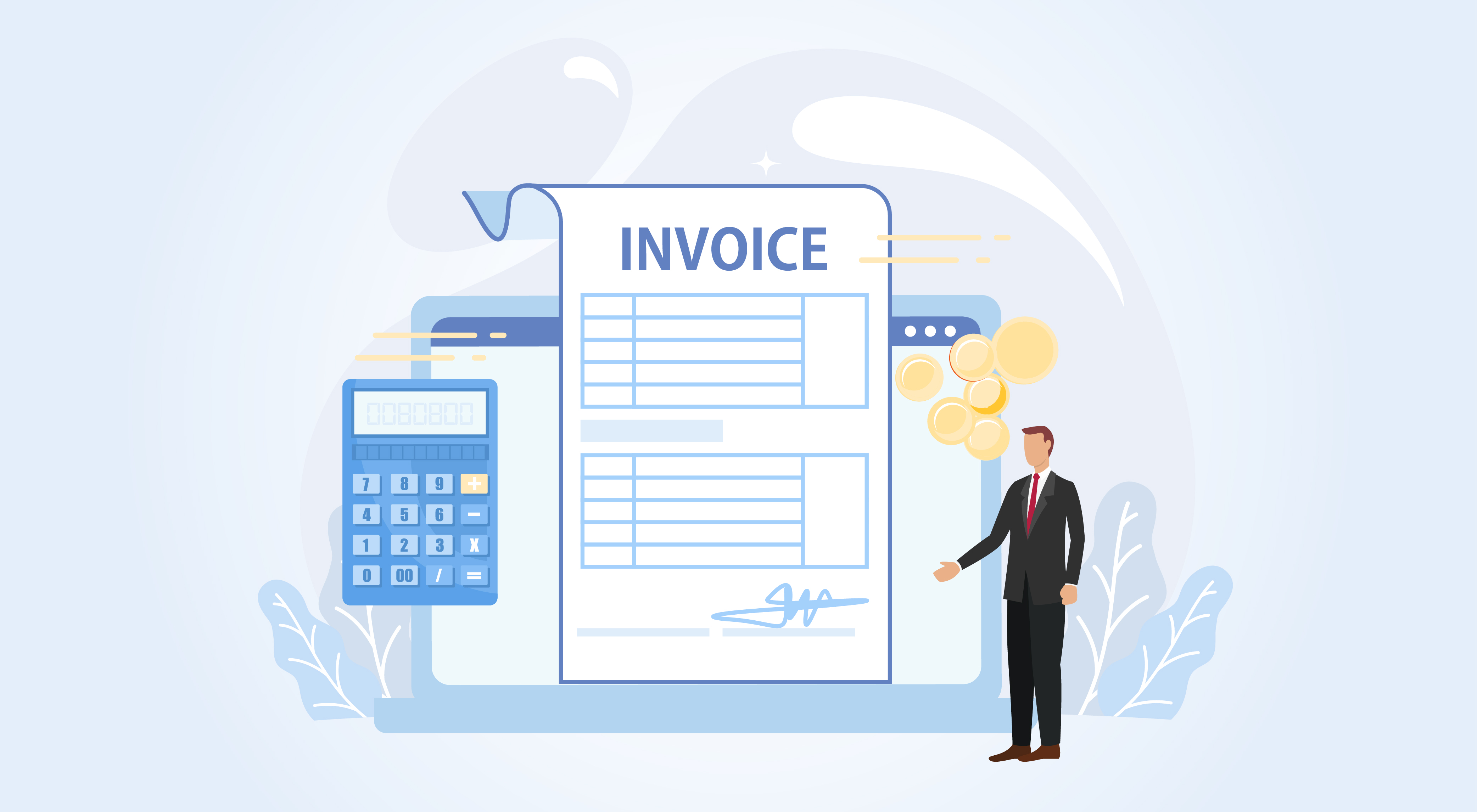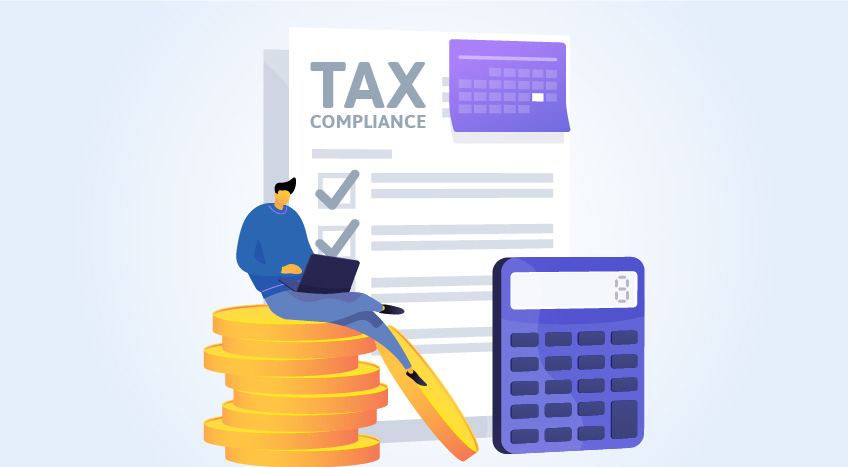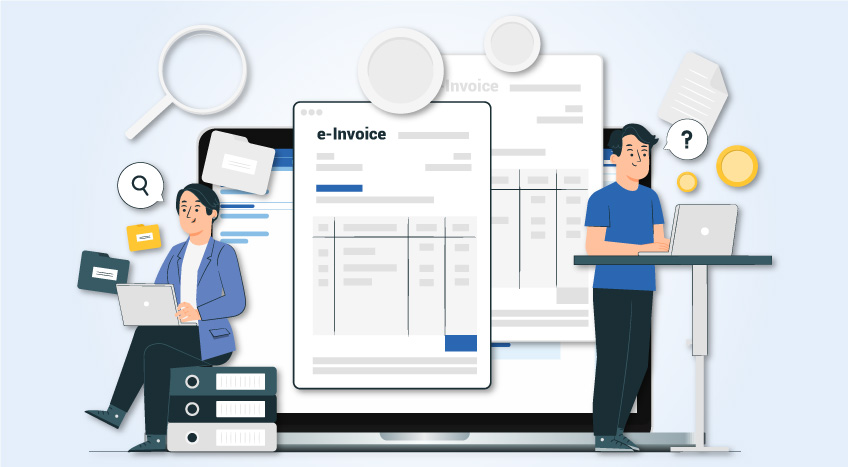The implementation of e-invoicing by UAE FTA has already started and is all set to roll out mandatorily by July 2026. It will be compulsory for B2B and Business-to-Government (B2G) transactions. The adoption of e-invoicing is a must for businesses in the UAE as the government hopes to digitise its tax system, improve compliance, reduce errors, and streamline financial reporting,
it promotes accuracy and transparency. Saudi Arabia, in this context, is doing some pioneering work with ZATCA e-invoicing initiatives, and the UAE is slowly moving in the same direction. The government's use of e-invoices is part of its efforts to reduce dependency on manual filing and paperwork. The system is based on the Peppol 5-corner model and aims to create a future marked by end-to-end invoicing, meeting international taxation standards.
Steps businesses should take to get ready for e-invoicing
With the UAE set to implement a nationwide e-invoicing system, it’s crucial for businesses to proactively adapt their operations. Preparing early not only ensures compliance but also helps avoid disruptions, penalties and last-minute technical challenges. Here’s a step-by-step look at how UAE businesses can get ready for this digital transformation.
1. Understanding the new regulatory requirements
The first step for any UAE business is to gain a thorough understanding of the new regulatory framework. Mandatory requirements are as follows -
- Only digital formats like XML or JSON are acceptable. Any other formats, like JPG or PDF, are unacceptable.
- Manually generated invoices are not acceptable.
- Invoices have to be sent via an ASP (Accredited Service Provider).
- The Peppol Network has to be used to send and receive invoices.
- The data format must be PINT (Peppol Invoice Standard) or UBL (Universal Business Language).
- Invoices have to be submitted in real time via the e-billing system.
- Invoices have to be stored digitally and need to be accessible for audits
- Invoices have to be validated using the mandated system.
The timeline for the electronic invoice was announced in 2024 during the Dubai E-Invoicing Exchange Summit. The proposed timeline for the e-invoicing system is -
- The accreditation process for UAE Service Providers began in the last quarter of 2024.
- Legislative updates are expected to be introduced in the second quarter of 2025.
- The first phase of e-invoicing is expected to go live by the second quarter of 2026.
2. Evaluating the current system
After understanding the mandatory regulatory expectations, businesses need to conduct a gap analysis. This will help them identify the gaps between current invoicing processes and the mandated system. The objective of this step is also to identify obsolescence so that the systems can be replaced before the e-invoice system comes into play.
The key focus areas should be -
- What is the present-day invoicing system of the business: paper-based, semi-digital, or completely automated?
- In the case of full automation, can the existing ERP or accounting software handle structured data formats like XML or UBL?
- Are there delays in invoice generation and reporting, and if yes, why so?
- Where is the data being stored so that data security concerns are addressed and the data can be retrieved easily?
The crux of this step is that businesses that still rely on manual invoicing or are semi-automated or use generic software would begin focusing on e-invoicing compliant systems.
3. Integrating existing software with e-invoicing platforms
The next stage involves two steps. The first is the selection of an Accredited Service Provider (ASP). The ASP is chosen based on the requirements of the business and authority. The ASP is responsible for validating and verifying the e-invoices. The ASP will then transmit the invoices in real-time through the PEPPOL network.
The next step involves integration. Businesses that still rely on manual processes will need to upgrade. Firms that are already digitised will need to ensure that their ERP, POS, and accounting software systems are integrated with the new modules or APIs, as approved by FTA, and compliant with ASP and the electronic invoice portal. Business management software like TallyPrime, with its VAT and e-invoicing-ready features, helps companies easily align with FTA regulations while ensuring smooth integration and secure data transmission.
4. Training teams for compliance readiness
The last step is about making your staff ready for e-invoicing. Just equipping and integrating the business with technology will not suffice. The how, why, and what of e-invoices must be told to employees.
Who needs to be trained? Your finance, accounts receivable, and IT teams must be trained.
What should the training specifically involve? It should talk about the new processes - how to generate and validate? They also need to learn how to archive and details of audit trail management.
Businesses can simplify the transition process through internal workshops or training programs with compliance consultants.
These are mandatory steps, but there is more. Businesses must run pilot programs to test if systems are running and producing output as they should be. Testing is an important step to refine internal processes before e-invoicing becomes mandatory. Besides, businesses must maintain proper digital records, meaning the right investment needs to be made.
The shift to e-invoicing is crucial as it is a part of the UAE’s digital transformation. With hardly a year left, it is high time businesses get started to ensure regulatory compliance, operational efficiency, and reduced manual errors. If you need expert support preparing e-invoices, you can bank on TallyPrime. It offers a sound electronic invoicing system that is compliant with the UAE’s regulatory requirements. This way, generating, validating, and transmitting invoices becomes seamless and accurate.









